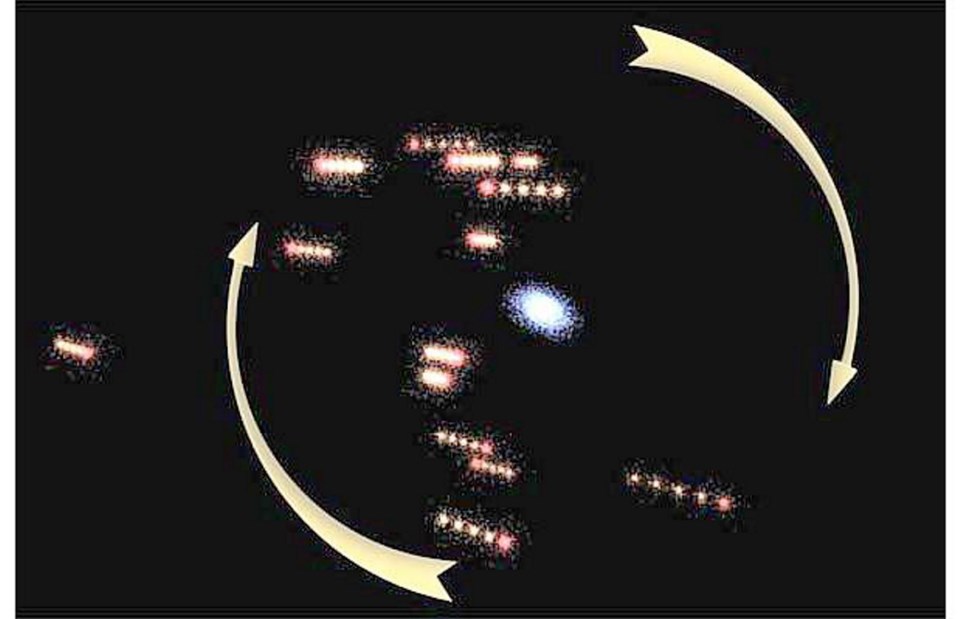A string of 13 dwarf galaxies in orbit around the massive galaxy Andromeda is not behaving as it should.
The galaxies are spread across a flat plane more than one million light years wide and only 30,000 light years thick, moving in synchronicity with one another, according to University of Victoria astronomer Julio Navarro, one of the co-authors of an article on the phenomenon in the latest edition of the journal Nature.
The view from Earth is of the thin edge of the plane, so the galaxies all appear to be moving in a line, Navarro said. Their behaviour is so different from the usual chaotic orbits of galaxies around each other that the researchers believe they have revealed a huge hole in science’s understanding of galaxy formation.
“It’s a very unusual, unexpected configuration,” Navarro said. “It suggests our thinking about how galaxies form is totally wrong.”
Computer models suggest that galaxies — collections of stars formed from dust and gas spread across the vastness of space — should orbit independently, almost randomly.
“[Galaxies] are like bees in a beehive,” he said. “We had thought that galaxies collect stars one by one from different directions and different orbits.”
But the structure of the synchronous galaxies orbiting Andromeda is much more like a mature solar system.
In solar systems, planets are created from debris and come to move in a plane-like formation over the course of hundreds of millions of orbits around a star. The same process led to the rings of rubble around Saturn.
But the dwarf galaxies of Andromeda are spread across a distance so vast that they haven’t completed a single orbit.
“Somehow, they have a plane-like structure similar to a solar system, but with a completely different origin and we don’t know what that origin is,” Navarro said.
Twelve of the 13 dwarf galaxies — they range in size from 10 million to 100 million stars — are on one side of the orbital plane, as if they are held by a string being swung from Andromeda.
“This looks like they are all moving together and they all know where to go, like some pre-existing structure has been sucked in by Andromeda,” he said.
The paper is based on data collected for a project led by UVic professor Alan McConnachie of the Herzberg Institute of Astrophysics in Saanich.



